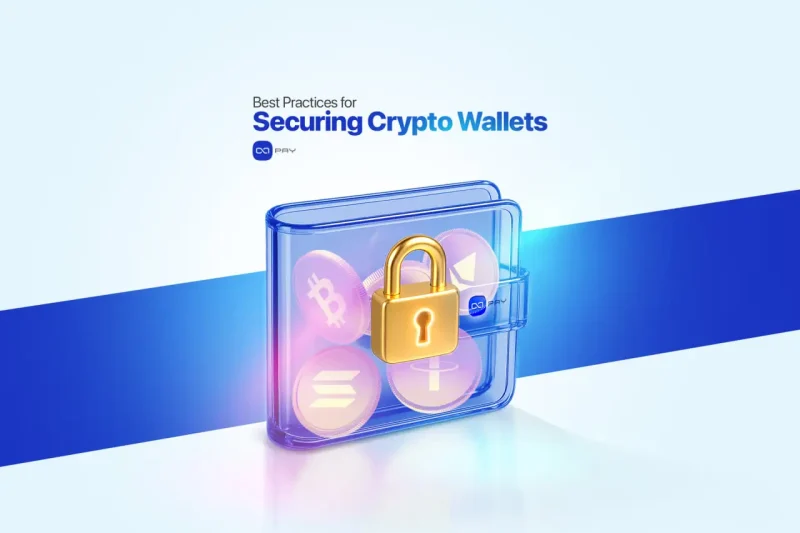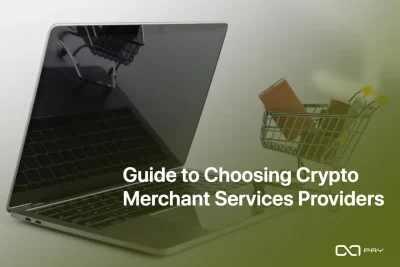When merchants decide to accept cryptocurrency, securing crypto wallets becomes a top priority for protecting customer payments and business funds. Unlike traditional bank accounts, crypto wallets place much of the responsibility for safety directly on the merchant. Poor wallet management can lead to lost funds, customer disputes, or reputational damage. To avoid these risks, it’s important to understand wallet types and apply the right practices.
Custodial vs. Non-Custodial Wallets
The first and most important decision for merchants is whether to use a custodial or a non-custodial wallet. This choice shapes how funds are stored, who controls private keys, and how responsibilities are managed.
Custodial wallets
A third-party provider secures the keys and manages wallet infrastructure on behalf of the merchant. With custodial solutions, there is no need to handle seed phrases or recovery backups directly. For example, OxaPay Wallet allows merchants to accept payments, manage balances, swap coins, and withdraw funds securely, all from a single dashboard. This reduces technical complexity and minimizes operational risks for businesses that prefer convenience and integrated management.
Non-custodial wallets
Merchants maintain full control of private keys and recovery phrases. While this gives maximum independence, it also means the business carries full responsibility for wallet backups, access control, and security procedures. Losing a seed phrase or failing to implement proper controls can result in permanent loss of funds.
Both approaches play an important role in securing crypto wallets, but the right choice depends on the merchant’s risk appetite and technical capacity.Custodial wallets like OxaPay prioritize ease of use and business continuity, while non-custodial wallets suit companies with in-house expertise and strict control policies. Merchants should carefully assess which model aligns with their resources, risk appetite, and long-term strategy.

Separating Hot and Cold Wallets
Merchants using non-custodial wallets should divide funds into:
- Hot wallets for day-to-day transactions.
- Cold wallets (offline storage) for reserves and larger balances.
This separation is a fundamental step in securing crypto wallets against external attacks, as it reduces exposure in case of a breach by keeping only the minimum necessary funds in hot wallets.
Multi-Signature Wallets for Team Security
In a business setting, no single employee should have full control over company funds. Multi-signature (multi-sig) wallets provide an added layer of protection by requiring approval from multiple authorized parties before a transaction can be executed. This collaborative approach prevents internal fraud, reduces the risk of human error, and eliminates single points of failure. For merchants handling large volumes of payments, multi-sig solutions are one of the most reliable methods for securing crypto wallets while maintaining accountability and transparency across the team.
Backup and Recovery Policies
For non-custodial setups, backups are essential:
- Store seed phrases securely offline (never in plain text or cloud storage).
- Keep backups in multiple secure locations.
- Test recovery procedures regularly.
Clear policies ensure that even if a device is lost or compromised, the business can still access its funds.

Training Staff Against Threats
Phishing and social engineering are among the biggest risks for merchants. Staff who handle wallets or approve payments should be trained to:
- Identify fake wallet apps or phishing emails.
- Use official blockchain explorers to verify transactions.
- Follow internal security procedures consistently.
Human error is often the weakest link, awareness is the best defense.
Advanced Security Practices for Merchants
Beyond basic wallet management, merchants should adopt enterprise-level security controls focused on securing crypto wallets. These structured measures minimize vulnerabilities across the organization by enforcing strict access policies, monitoring activities, and keeping systems updated. Such proactive practices reduce financial loss, prevent operational disruption, and strengthen customer trust, ensuring long-term business resilience.
Access Control
Not all employees need full wallet permissions. Use role-based access so only finance team members can manage funds, while others have limited or view-only rights. This prevents unauthorized use and minimizes insider risks.
Monitoring & Logging
Keep detailed records of every transaction and login attempt. Regularly reviewing these logs helps identify unusual activity early, such as failed login attempts or irregular withdrawals.
Secure Networks
Always access wallets from trusted devices and secure connections. Avoid public Wi-Fi, and consider VPNs or firewalls for extra protection.
Two-Factor Authentication (2FA)
Add OTPs or authenticator apps to strengthen login security. Even if credentials are stolen, attackers cannot gain access without the second factor.
Software Updates
Outdated software often contains vulnerabilities. Keep wallets, plugins, and devices up to date to stay protected.
Separation of Duties
Divide responsibilities, staff who process customer orders should not be the same individuals who approve transactions. This ensures oversight and accountability.
Quick Security Checklist for Merchants
A quick checklist helps merchants focus on securing crypto wallets effectively, reducing risks, and ensuring smoother operations while protecting both customer payments and business funds.
✅ Do’s
- Enforce role-based access controls
- Monitor logs and transaction activity regularly
- Use secure networks and VPN/firewalls
- Enable 2FA on all wallet accounts
- Keep wallet apps and systems updated
- Separate duties for orders and transaction approvals
❌ Don’ts
- Don’t give all employees full wallet access
- Don’t ignore failed login attempts or suspicious activity
- Don’t approve transactions without dual control
- Don’t access wallets via public Wi-Fi
- Don’t use outdated or unofficial wallet software
Conclusion: Building Trust Through Secure Wallet Practices
For merchants, wallet security isn’t just about protecting assets, it’s about maintaining customer trust and ensuring smooth business operations. Whether using non-custodial wallets with strict best practices or leveraging custodial solutions like OxaPay, the goal is the same: keep funds safe and transactions reliable.
👉 Ready to accept crypto payments with confidence? Use OxaPay Crypto Payment Gateway to combine secure wallet management with seamless crypto payment processing for your business.




